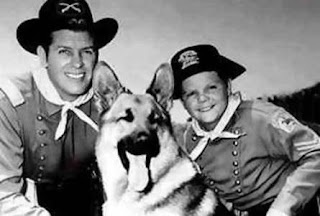
Medical uses
Dentures can help people via:
- Mastication: chewing ability is improved by the replacement of edentulous (lacking teeth) areas with denture teeth.
- Aesthetics: the presence of teeth gives a natural appearance to the face, and wearing a denture to replace missing teeth provides support for the lips and cheeks and corrects the collapsed appearance that results from the loss of teeth.
- Pronunciation: replacing missing teeth, especially the anteriors, enables patients to speak better, enunciating more easily sibilants and fricatives in particular.
- Self-esteem: improved looks and speech boost confidence in patients' ability to interact socially.
Stomatitis
Denture stomatitis is an inflammatory condition of the skin under the dentures. It can affect both partial and complete denture wearers, and is most commonly seen on the palatal mucosa. Clinically, it appears as simple localized inflammation (Type I), generalized erythema covering the denture-bearing area (Type II) and inflammatory papillary hyperplasia (Type III). People with denture stomatitis are more likely to have angular cheilitis. Denture stomatitis is caused by a mixed infection of Candida albicans (90%) and a number of bacteria such as Staphylococcus, Streptococcus, Fusobacterium and Bacteroides species. Acrylic resin is more susceptible for fungal colonization, adherence and proliferation. Denture trauma, poor denture hygiene and nocturnal denture wear are local risk factors for denture stomatitis. Systemic risk factors for denture stomatitis include nutritional deficiencies, immunosuppression, smoking, diabetes, use of steroid inhaler and xerostomia. A person should be investigated for any underlying systemic disease. Improve the fit of ill-fitting dentures to eliminate any dental trauma. Stress on the importance of good denture hygiene including cleaning of the denture, soaking the dentures in disinfectant solution and not wearing it during sleeping at night is the key to treating all types of denture stomatitis. Topical application and systemic use of antifungal agents can be used to treat denture stomatitis cases that fail to respond to local conservative measures.
Tooth loss
People can become entirely edentulous for many reasons, the most prevalent being removal due to dental disease, which typically relates to oral flora control, i.e., periodontal disease and tooth decay. Other reasons include pregnancy, tooth developmental defects caused by severe malnutrition, genetic defects such as dentinogenesis imperfecta, trauma, or drug use.
Periodontitis is defined as an inflammatory lesion mediated by host-pathogen interaction that results in the loss of connective tissue fiber attachment to the root surface and ultimately to the alveolar bone. It is the loss of connective tissue to the root surface that leads to teeth falling out. The hormones associated with pregnancy increases the risk of gingivitis and vomiting.
Hormones released during pregnancy softens the cardia muscle ring that keeps food within the stomach. Hydrochloric acid is the acid involved in gastric reflux, also known as morning sickness. This acid, at a pH of 1.5-3.5, coats the enamel on the teeth, mainly affecting the palatal surfaces of the maxillary teeth. Eventually the enamel is softened and easily wears away.
Dental trauma refers to trauma (injury) to the teeth and/or periodontium (gums, periodontal ligament, alveolar bone). Strong force may cause the root of the tooth to completely dislocate from its socket, mild trauma may cause the tooth to chip.
Removable partial dentures
Removable partial dentures are for patients who are missing some of their teeth on a particular arch. Fixed partial dentures, also known as "crown and bridge" dentures, are made from crowns that are fitted on the remaining teeth. They act as abutments and pontics, and are made from materials resembling the missing teeth. Fixed bridges are more expensive than removable appliances but are more stable.
Another option in this category is the flexible partial, which takes advantage of innovations in digital technology. Flexible partial fabrication involves only non-invasive procedures. Dentures can be difficult to clean and can affect oral hygiene.
Complete dentures
Complete dentures are worn by patients who are missing all of the teeth in a single arch—i.e. the maxillary (upper) or mandibular (lower) arch—or, more commonly, in both arches. The full denture is removable because it is held in place by suction. They are painful at first and can take some time to get used to. There are two types of full dentures: immediate dentures and conventional dentures.
George Washington
George Washington (1732–1799) suffered from problems with his teeth throughout his life, and historians have tracked his experiences in great detail. He lost his first adult tooth when he was twenty-two and had only one left by the time he became president. He had several sets of false teeth made, four of them by a dentist named John Greenwood. None of the sets, contrary to popular belief, were made from wood or contained any wood. The set made when he became president were carved from hippopotamus and elephant ivory, held together with gold springs. Prior to these, he had a set made with real human teeth, likely ones he purchased from "several unnamed Negroes, presumably Mount Vernon slaves" in 1784.
For more information, go here: https://en.wikipedia.org/wiki/Dentures

- 1960 – Swanson added desserts to a new four-compartment tray.
- 1964 – Night Hawk name originated from the Night Hawk steak houses that operated in Austin, Texas from 1939 through 1994. The original diners were open all night catering to the late-night crowd. The restaurants produced the first frozen Night Hawk TV dinner in 1964.
- 1969 – The first TV breakfasts were marketed. Great Starts Breakfasts and breakfast sandwiches followed later.
- 1973 – The first Swanson Hungry-Man dinners were marketed; these were larger portions of its regular dinner products.
- 1986 – The first microwave oven-safe trays were marketed.
- 1986 – The Smithsonian Institute inducted the original Swanson TV Dinner tray into the Museum of American History.













